
Click Follow in the What's New section to be notified each month when the What's New is published.
Check out what's new in the last month:
- Admin Center
- Support
- Messaging
- AI agents
- Voice
- Knowledge
- Quality assurance
- Workforce management
- Analytics
- Integrations
- Security
Also don't miss:
Admin Center
-
A new setting is available to turn on draft mode for comments by default. Instead of requiring each agent to turn on draft mode for themselves, admins can set draft mode to be on by default for all agents in all tickets. See Automatically activating and deactivating draft mode.
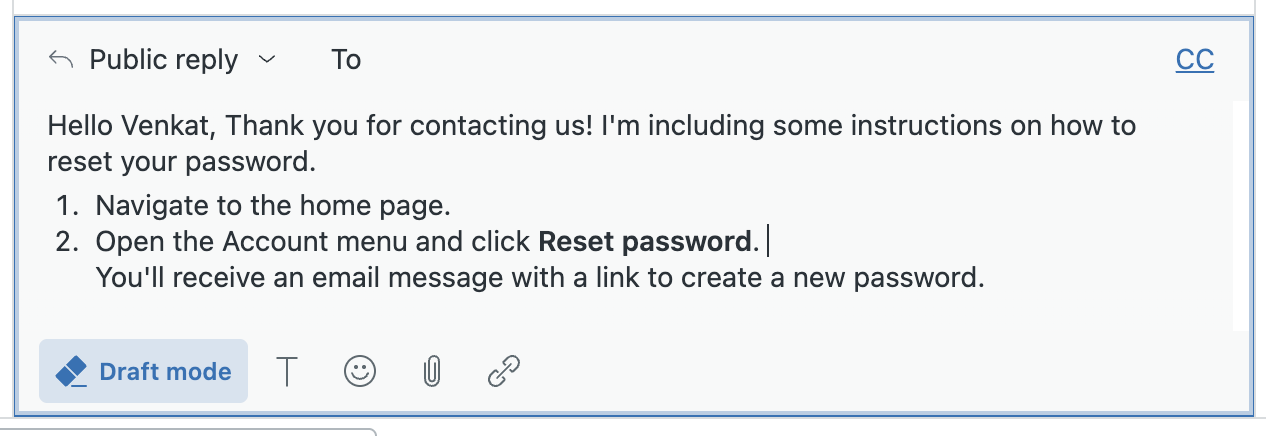
-
The Features page in Admin Center gives Zendesk Suite customers greater transparency and control over their accounts. You can now easily view your current plan capabilities, active trials, and key add-ons — all in one place. See Viewing and managing features.
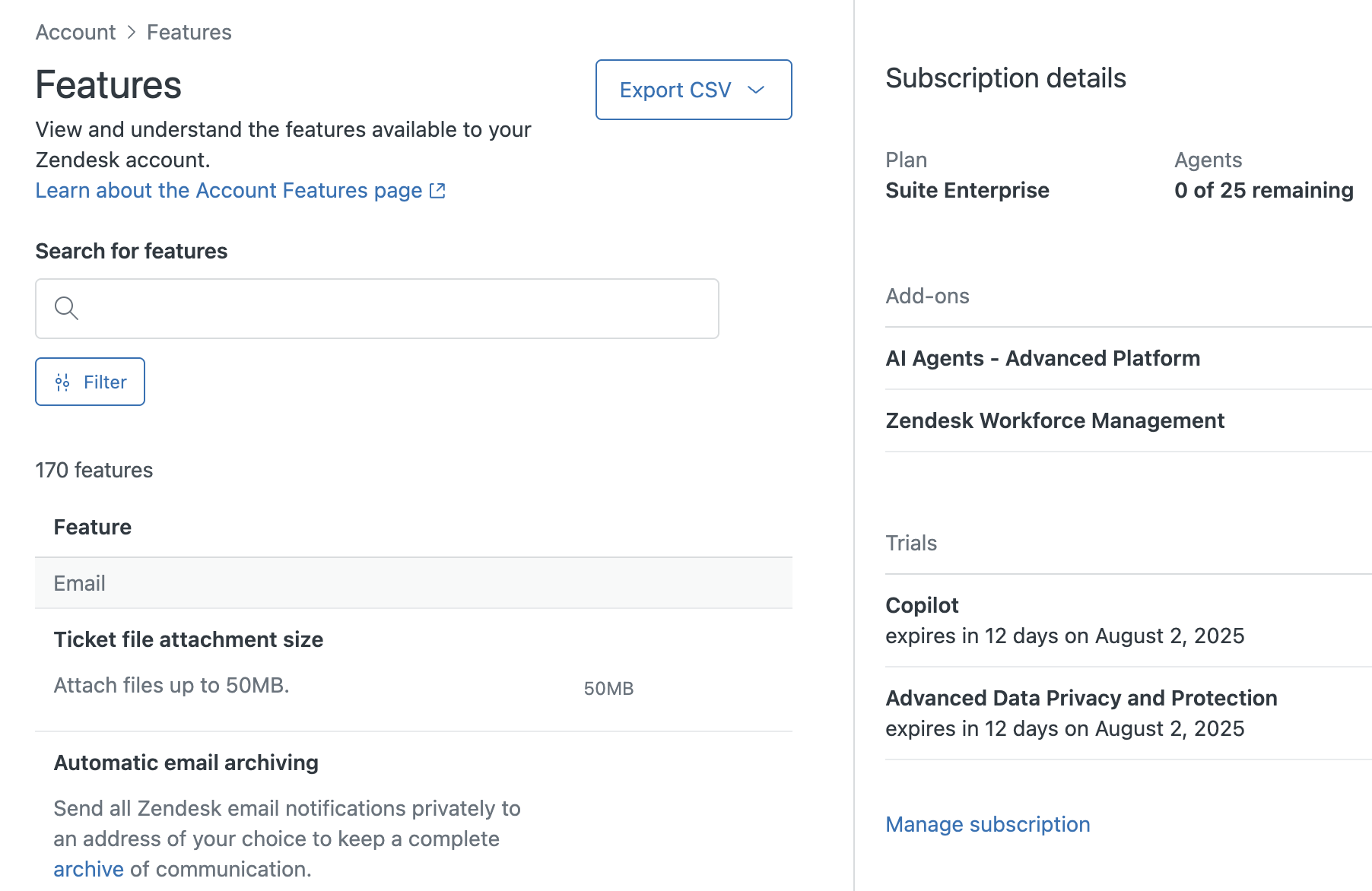
Support
-
Approval requests for tickets is now available. With approvals, your team can send approval requests to other team members or registered end users directly from the Agent Workspace. Approvals is designed to work well for customer service and employee service scenarios. See Understanding approvals and how they work.

-
Side conversations are now available in the Support mobile app. Agents can view and reply to email-based side conversations on a ticket in the iOS and Android mobile apps, helping your team collaborate with anyone - teammates, other departments or external partners - without ever leaving the ticket. See Working with tickets in the Support mobile app.
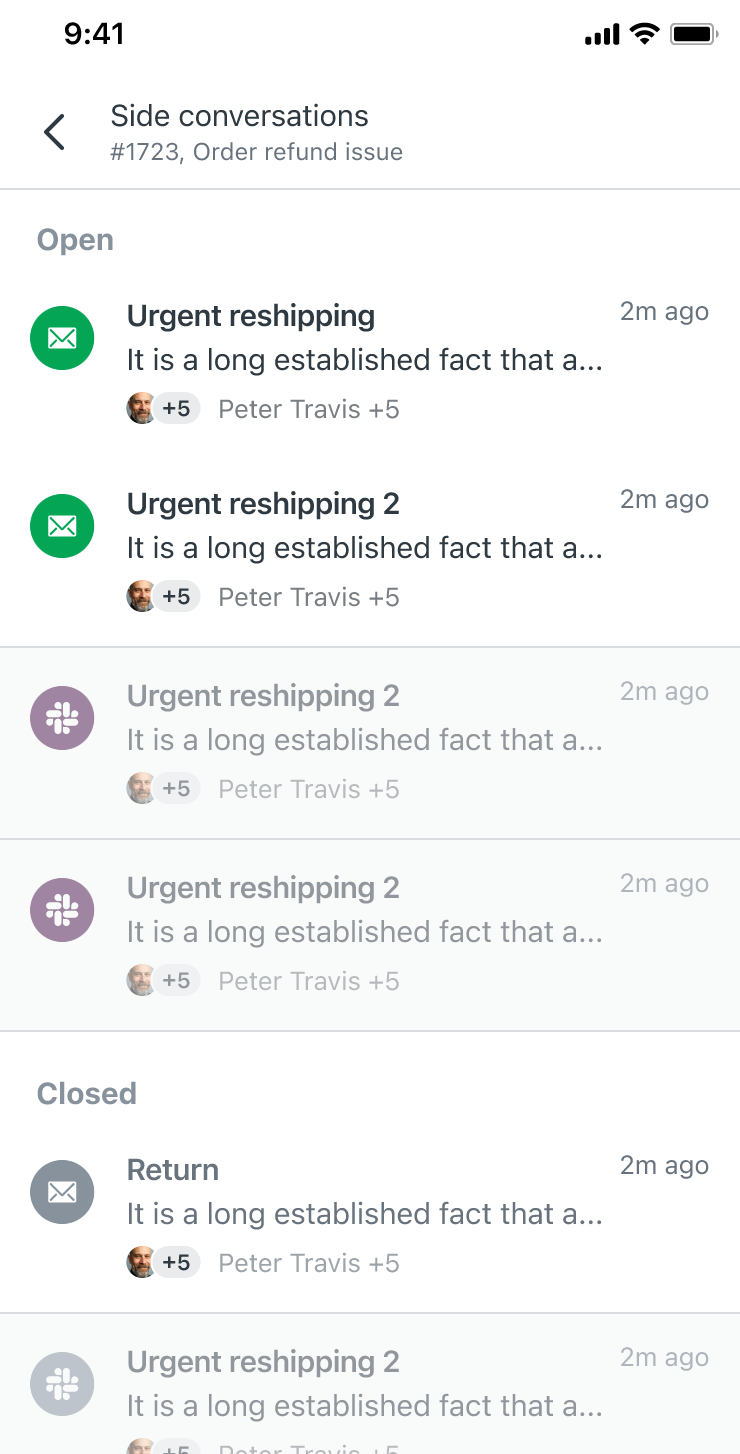
- With communication guidelines, you can define brand-specific guidelines that tell auto assist and the rewrite in your tone tool how to write. When these Copilot AI tools make suggestions to your agents, the suggestions match the guidelines you defined. See Using communication guidelines to improve AI assistance for agent comments.
- The Copilot Overview page has been enhanced with new recommendation types, additional languages, actionable recommendations, and the option to add feedback to dismissed recommendations. These enhancements make it simpler for you to act on recommendations and streamline triage workflows. See Monitoring and optimizing effective AI setup in your account.
- As part of intelligent triage, admins can now define synonyms for entity values. This enhances the accuracy of entity detection, allowing you to build more reliable, entity-based workflows. See Editing and managing entities.
-
Intelligent triage now suggests new intents weekly. Intent suggestions appear directly in the Intent page in Admin Center, making it easier to maintain and improve your setup over time. See Reviewing personalized intelligent triage intent suggestions.
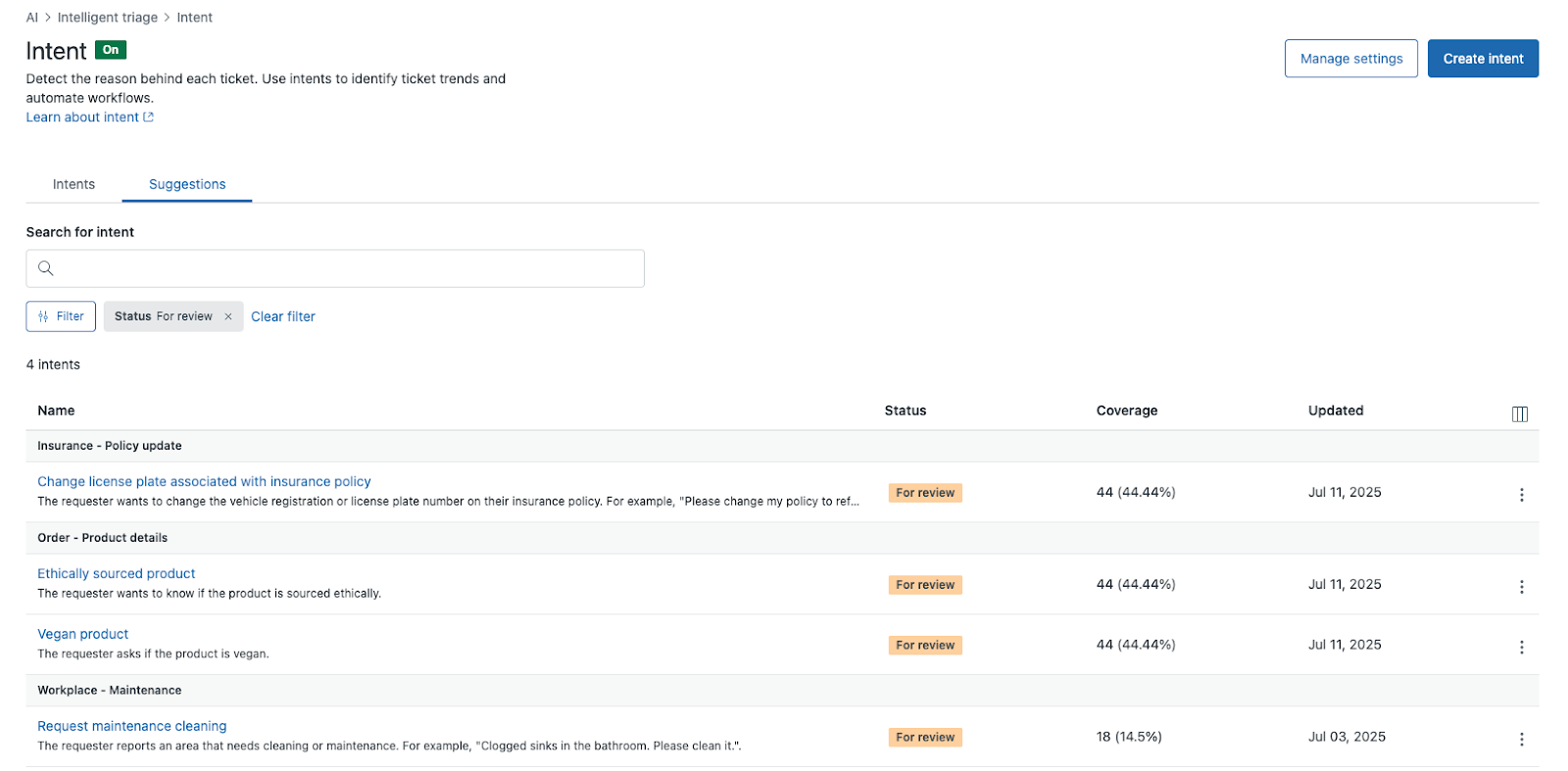
- You can now link standard actions and action flows directly in your procedures for auto assist. By linking actions or action flows in procedures, you can ensure that auto assist performs the correct action or orchestrates multiple automated steps seamlessly. See About actions for auto assist and action flows.
-
Auto assist can now provide direct instructions for agents in the knowledge section in the context panel. With this enhancement, you can define auto assist procedures with direct instructions that will be presented to agents at a specific point of the ticket lifecycle. See Creating instructions for agents in auto assist procedures.
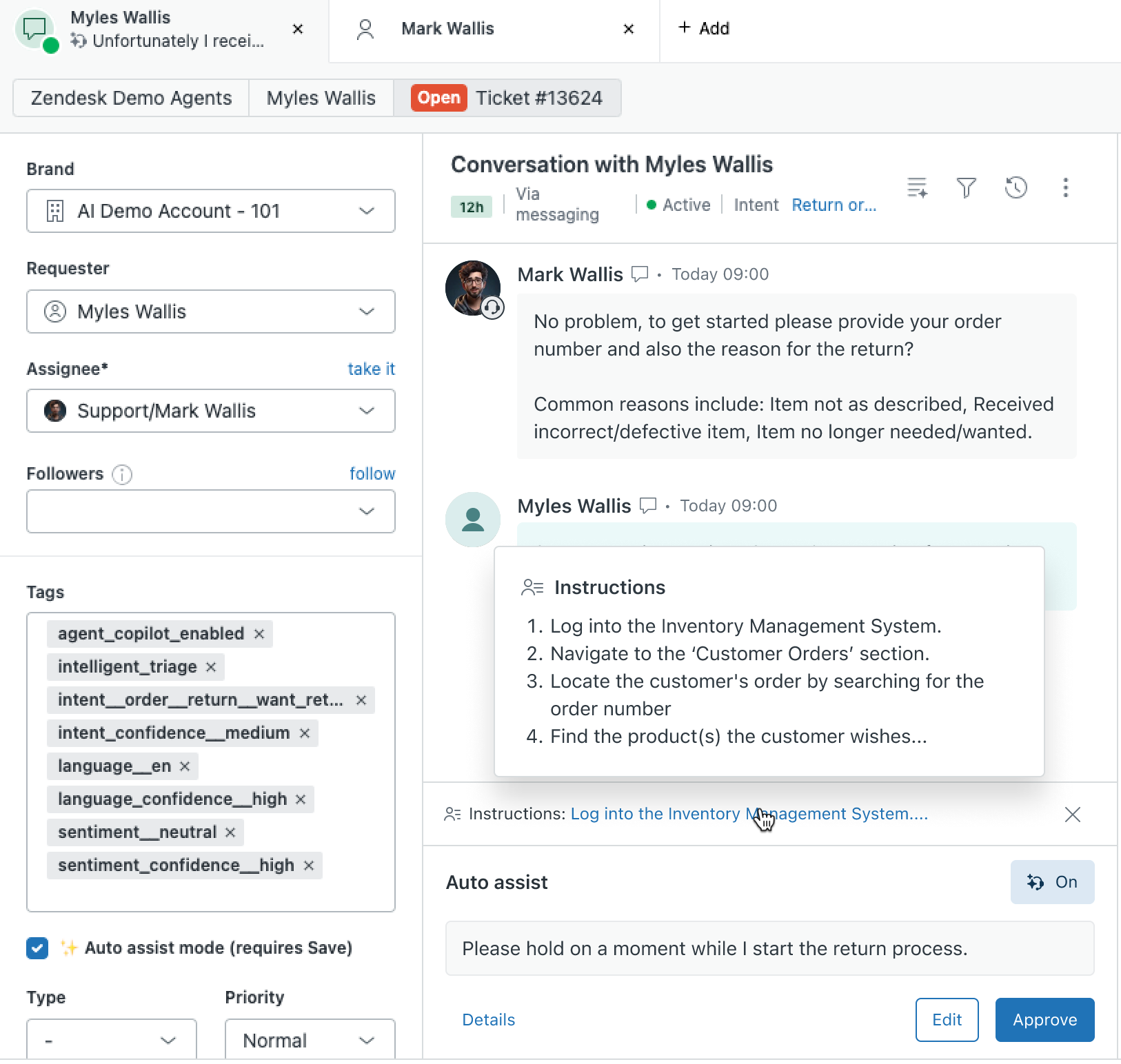
Messaging
- You can restrict end-user access to your Zendesk messaging channels by banning their IP address. When an IP address is banned from your messaging channels, all end users from the banned address are blocked from conducting conversations with your AI or human agents. See About banning IP addresses from messaging channels.
-
Web Widgets can now be configured to use help center authentication for end users. When help center authentication is turned on for the Web Widget, interactions with the Web Widget by end users who are signed into the help center automatically adopt the user's signed-in identity. The user's name and email address can be shared with the bots and agents engaging with them. See Turning help center authentication for messaging on and off.

- Updated omnichannel routing logic for agent-ended messaging sessions means only tickets whose routing channel changes from messaging to email after the session ends are eligible for routing. See Understanding ticket routing for tickets with agent-ended messaging sessions.
- Send reminders to end users when their messaging conversation becomes inactive. Configuration options for inactivity reminders are part of the capacity release settings in Admin Center. See Sending conversation inactivity reminders to end users.
-
New messaging goals let you track specific customer actions. Goals can be assigned to agent groups, allowing you to track which conversations lead to a completed goal, and see how often each agent is responsible for driving the action. See Tracking customer actions with messaging goals.
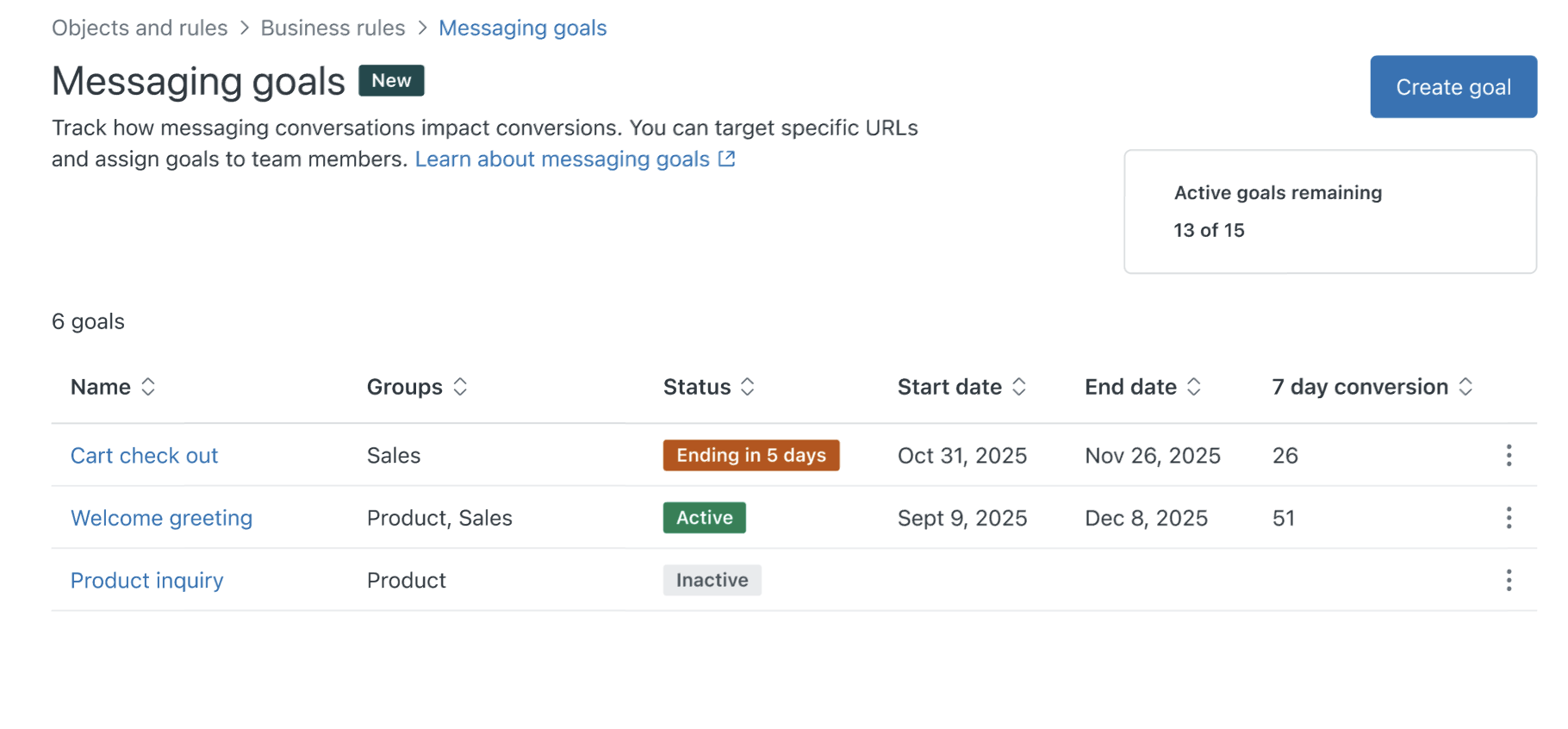
- Rich text formatting options for web and mobile messaging channels are now supported in ticket comments. See Rich text formatting options reference.
AI agents
-
In AI agents - Essential, AI agents are now available on email and web form channels. These AI agents send generative replies to customer questions based on relevant help center content, including direct links to the articles for more context. This means fewer follow-ups, more automated resolutions, and less work on your teams. See Creating an AI agent to automatically resolve customer issues.

-
In AI agents - Essential, you can now use instructions to tailor your AI agent’s generative responses. This feature was previously available only in AI agents - Advanced. Instructions let you control your AI agent's behavior in ways beyond customizing its default persona options, helping you balance generative AI's automation potential with control over your brand. See Using instructions to influence AI agent responses.
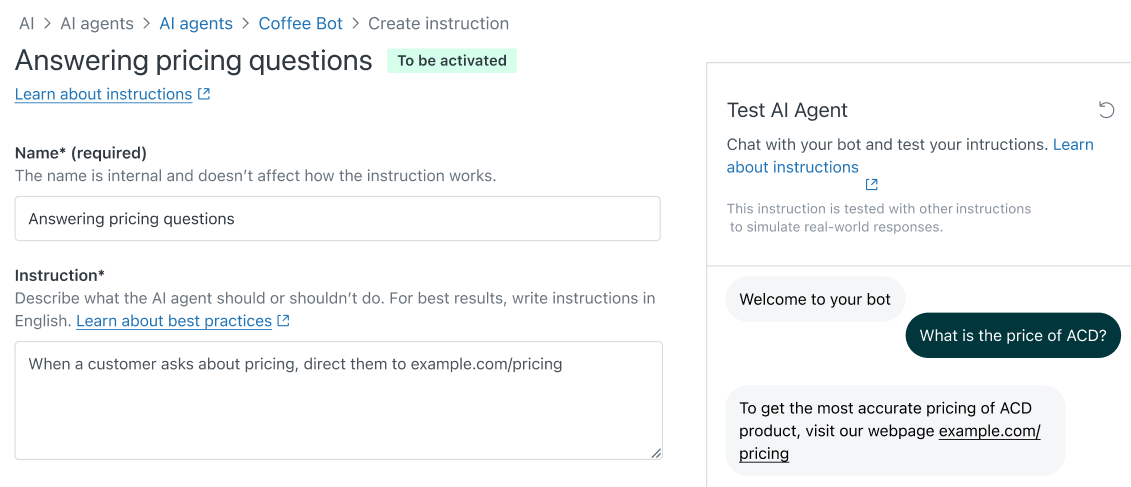
-
In AI agents - Advanced, you can use segments to create more targeted conversation flows for customers with similar traits. You can create segments based on locale, language, customer type, or any other custom session parameter. After you create a segment, you can use it in a dialogue as part of a conditional block, or in a search rule for AI agents that use agentic AI. See Creating segments to target specific customers in advanced AI agent conversations.
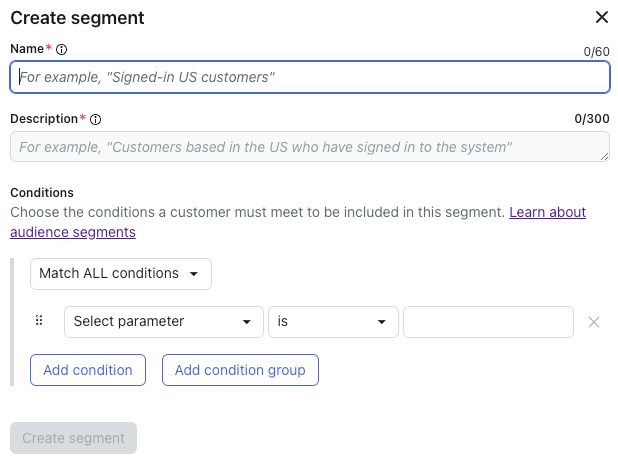
Voice
- The maximum queue size that Professional and Enterprise customers can configure in Voice settings has been increased from 60 to 1,500. See Configuring voice channel settings.
Knowledge
-
You can now create one article and place it in up to 10 different sections across all brands in your help center. Updates to the article’s content are automatically reflected across all placements, so you only need to create and maintain content once. See Placing articles in multiple sections with article multiplacement.

Quality assurance
-
New Zendesk QA SLA spotlight insight and conversation filter. SLA has been added as a Spotlight insight and conversation filter for conversations in Zendesk QA. This enhancement allows you to quickly identify SLA breached conversations for further analysis and for review based on your Zendesk Support SLA policies. See Understanding spotlight insights.
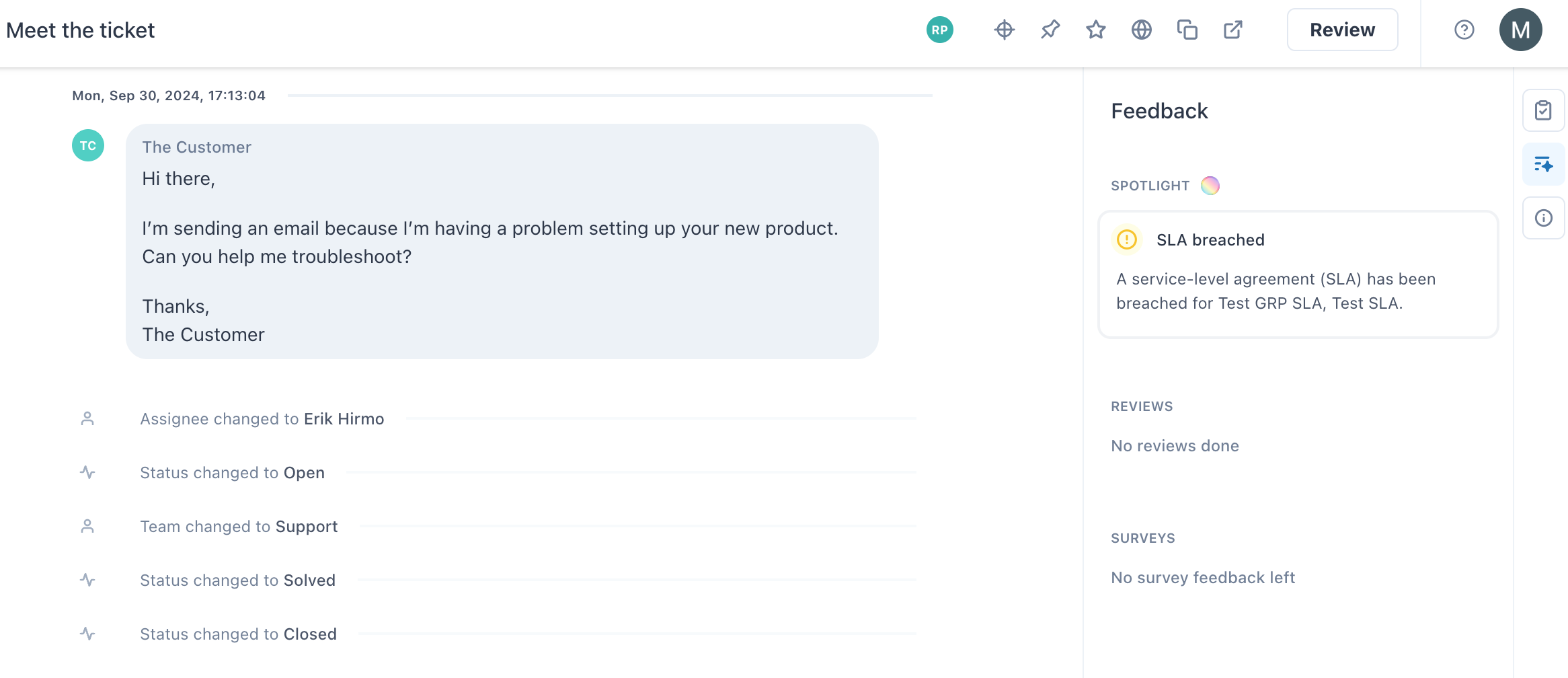
Workforce management
- Grouping and filtering historical reports by organization. Zendesk WFM now supports grouping and filtering historical reports by organization. See About custom WFM report templates.
-
Manually adding activities in the agent activity timeline in WFM. Admins can now manually add activities, such as general tasks or untracked time, directly into the agent’s activity timeline in WFM. See Managing agent activity.
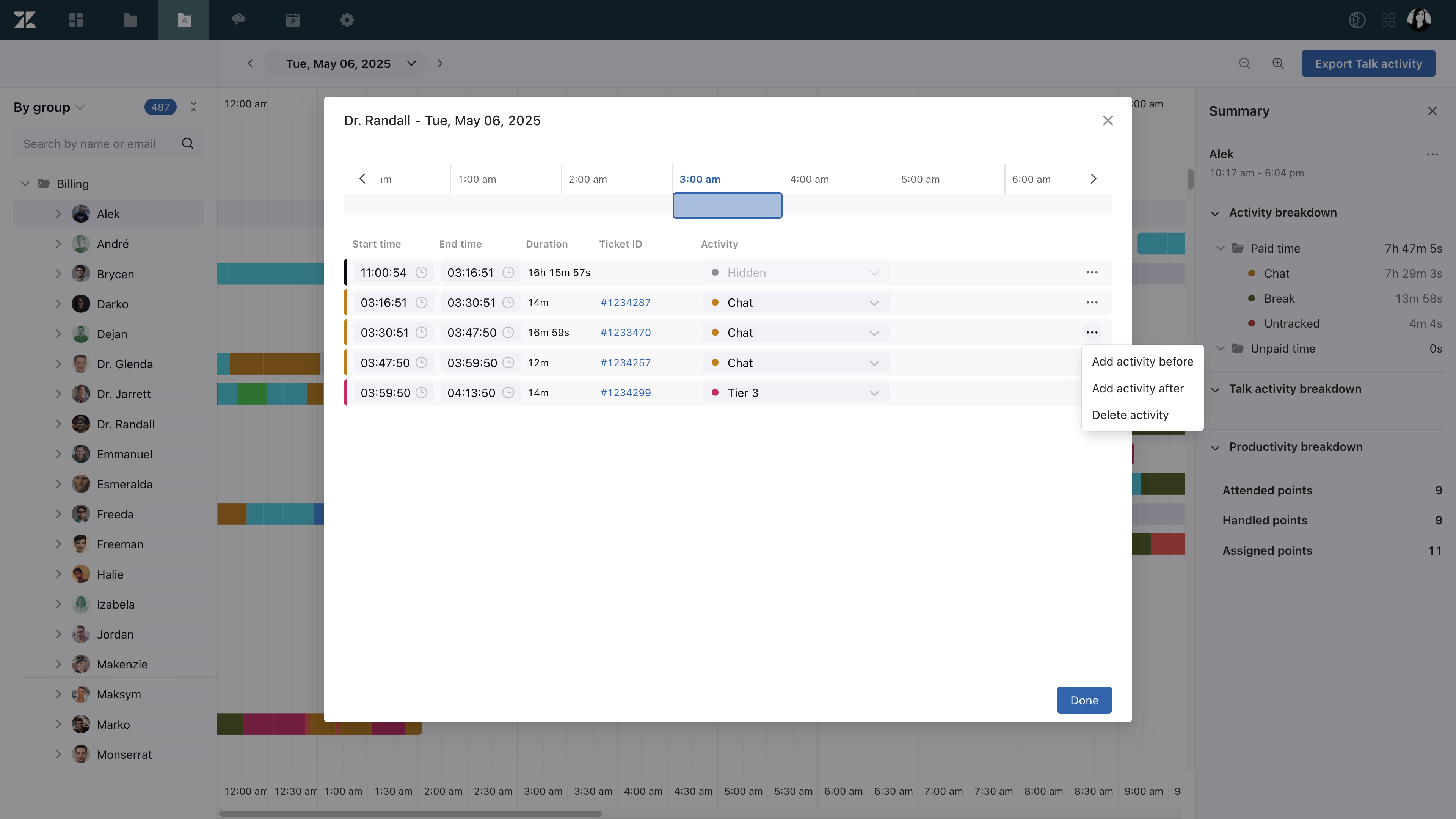
-
Reverting schedule changes to the last published state in WFM. Admins can now revert a schedule to the last published state and reset all changes made to shifts. See Reverting published changes.
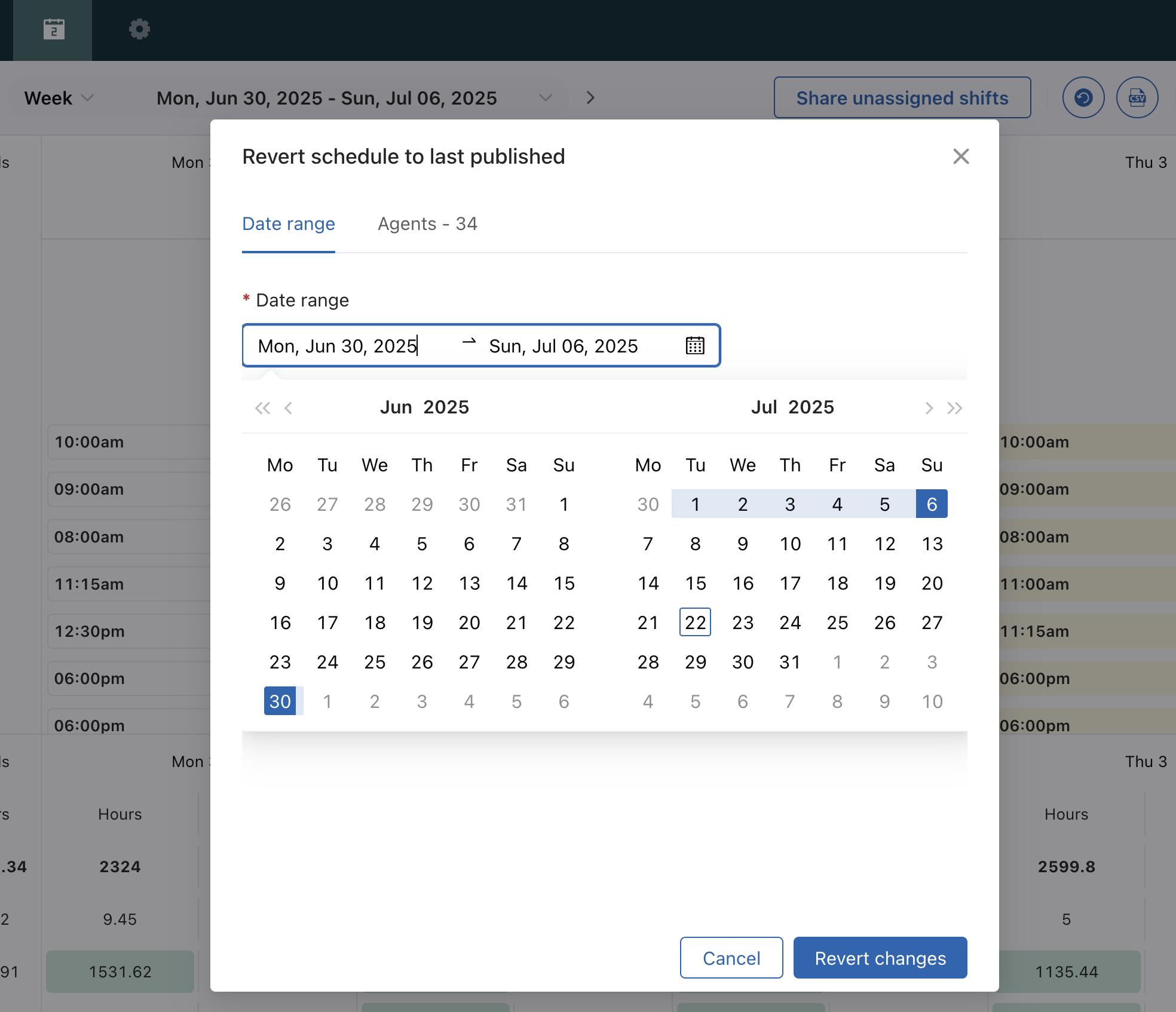
-
Weekly schedule duplication in WFM. Admins can now duplicate an entire week of shifts for a team, group, location, or even all agents at once. Additionally, they can copy an agent's schedule for future weeks or paste it for another agent to use. See Duplicating agent schedules.
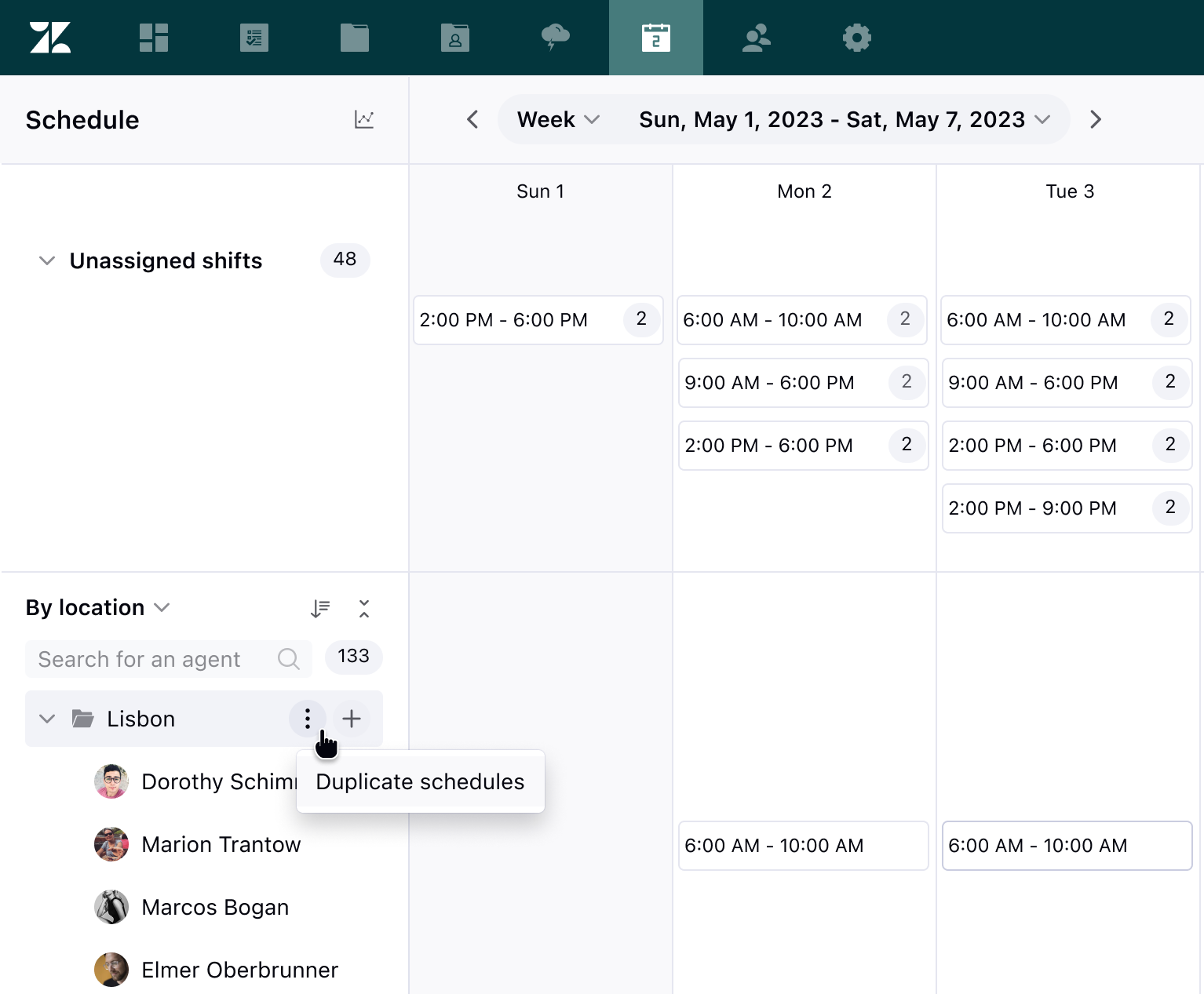
-
Agent time tracking outside of Zendesk. Extension tracking allows Zendesk WFM general tasks to be mapped to specified URLs. When active, agent activity is tracked when they visit any URLs you specify. See Tracking agent time spent outside of Zendesk.

Analytics
-
The new Zendesk Copilot: Agent productivity dashboard is now available. This dashboard allows you to track how agents interact with Copilot AI in Zendesk by providing a clear view of how they adopt and engage with Copilot AI tools. This information helps you track usage, optimize workflows, and boost productivity. See Analyzing your Copilot activity.
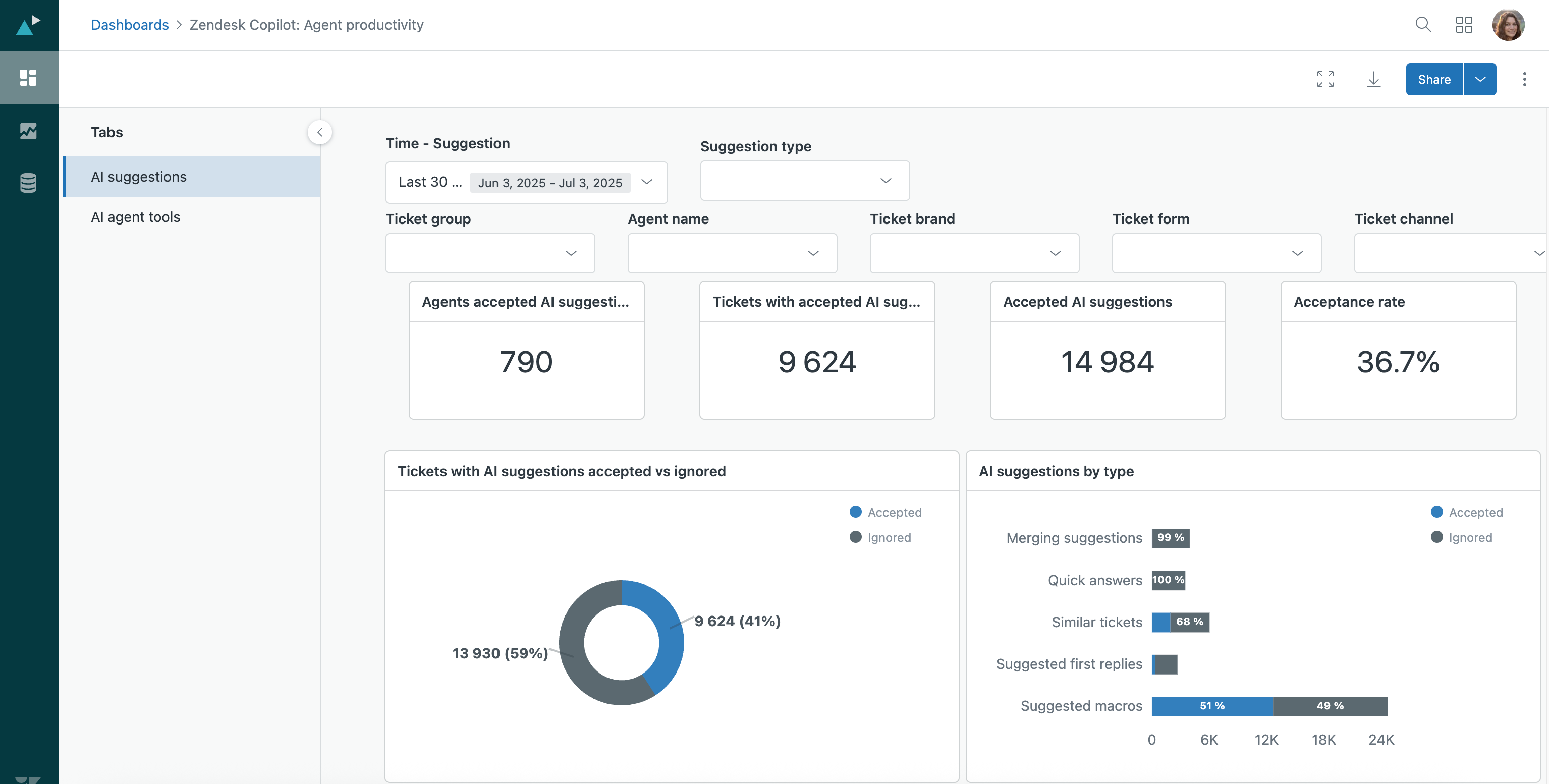
-
Real time monitoring dashboards combine data from various channels to provide visibility into your business. These new reports combine both real-time and historical views of your data to give you a clearer picture of your business. See Working with real time monitoring dashboards.
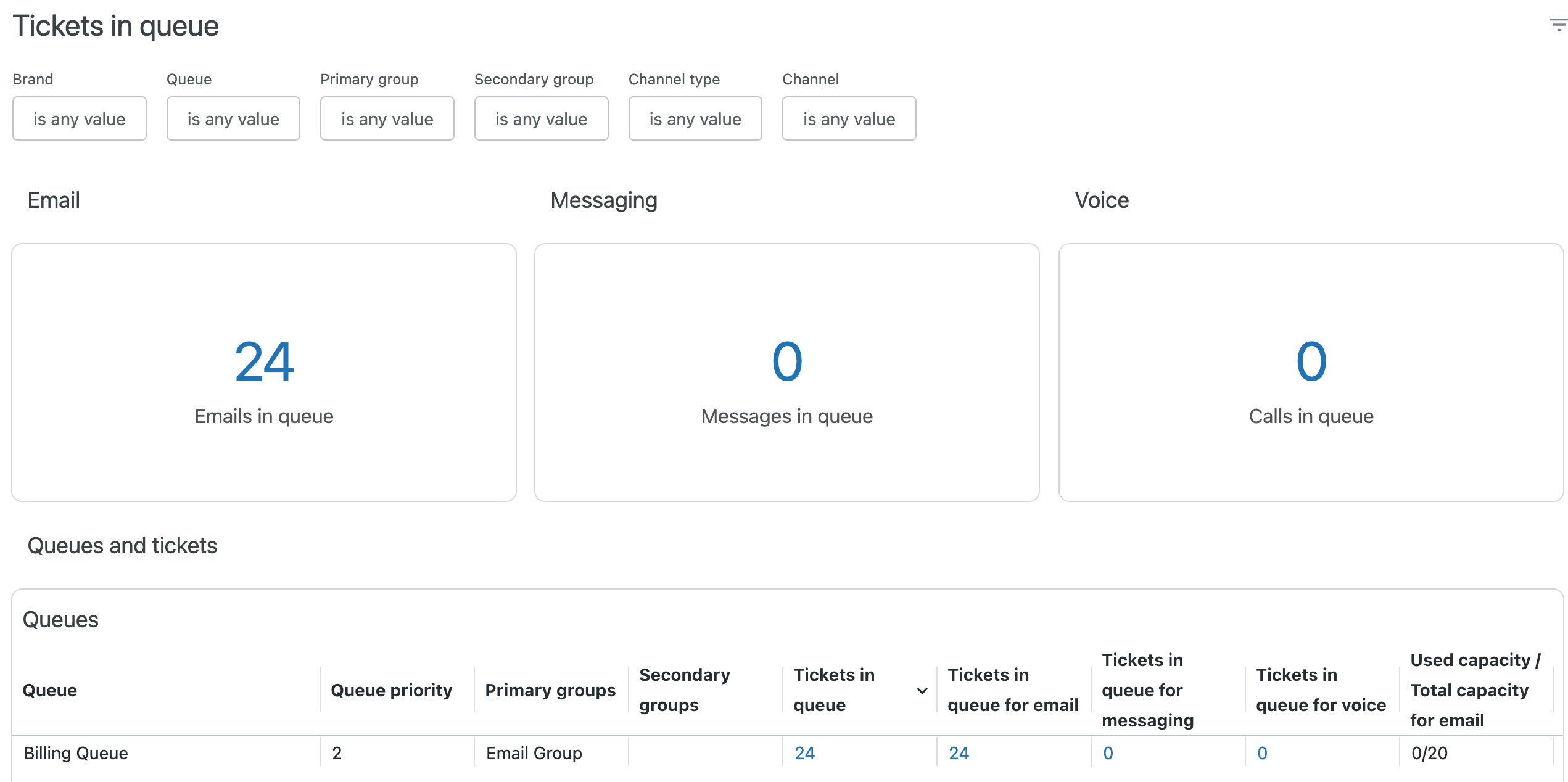
Integrations
- Admin configuration capabilities are available for the Workday integration in Zendesk Support, allowing admins to customize the Workday data displayed to agents and HR personnel. See Configuring the Workday app for Zendesk Support.
- The Shopify app for Zendesk Support is now fully compatible with dark mode. Users who prefer the dark mode interface in Zendesk Support will enjoy the same visual experience and reduced eye strain when using the app.
Security
- Admins can restrict agents and end users from uploading files that are not on an allowed list of file types. This enhancement improves control, strengthens security, and protects both Zendesk and its customers. See Restricting ticket attachments to Zendesk-recommended file types.
- Customers using advanced encryption with the Advanced Data Privacy and Protection add-on can encrypt email addresses and social identities, such as X handles and Facebook IDs. This enhancement improves control, strengthens security, and protects both Zendesk and our customers. See About advanced encryption for details.
- The data masking production EAP is now available. Data masking provides advanced privacy and security controls to Zendesk by allowing organizations to control which agents can access personally identifiable information (PII) such as names, email addresses, and phone numbers. See About data masking for details.